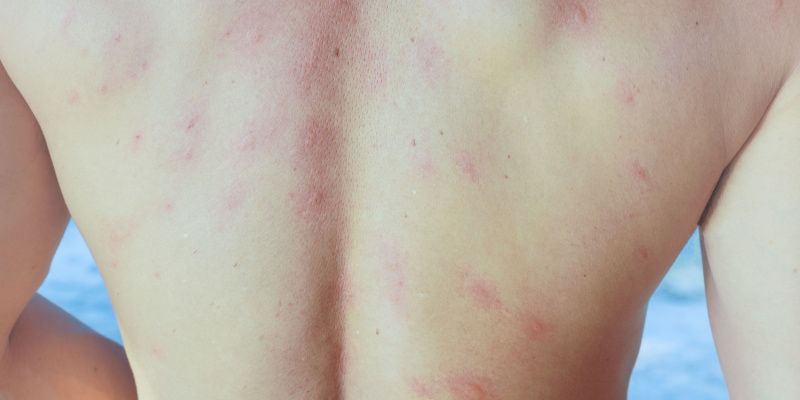Do you suspect that your home may have a bed bug infestation? Bed bugs are tiny, nocturnal pests that feed on blood. They can hide in mattresses, box springs, bed frames, and other furniture. Knowing the signs of an infestation is critical to treating it quickly before it spreads. In this article, we’ll discuss how to spot a bed bug infestation so that you can promptly take action and rid your home of these nuisance pests.
Where to Look
When it comes to keeping your home safe from pests, bed bugs are one of the most difficult to spot. Bed bugs are small, nocturnal creatures that feed on human and animal blood. They can hide in tiny cracks and crevices around your bedroom, making them hard to detect. Bed bugs usually congregate near mattresses, box springs, bed frames, and headboards, as these offer easy access to their food source. However, they may also hide in other furniture, such as couches or chairs, behind baseboards, or picture frames. Knowing where to look for signs of a bed bug infestation is key to preventing the further spread of these unwanted guests. Most importantly, it’s essential to inspect any used furniture or clothing that comes into your home.
- Fecal Spots
One of the clear signs of an infestation is the presence of fecal spots. Fecal spots are tiny dark or black stains caused by bed bugs digesting blood from their food sources. These spots can appear on mattresses, sheets, furniture, and other surfaces throughout your home. Fecal spotting is a common symptom of bed bug activity and should not be overlooked. To identify these spots, you should use a flashlight to inspect your sleeping area and around any seams or crevices in your furniture. Use a magnifying glass to better look at any suspicious sites that could contain these fecal deposits.
- Shed Skin or Eggs
If you find small translucent shells around mattresses, box springs, headboards, and other areas with fabrics, this could be evidence of a bed bug infestation. Bed bugs molt up to five times before they reach adulthood, so these shells are discarded right after the molting process. You might also spot eggs; they look like pearly white grains that measure about 1 millimeter long and can easily stick to surfaces such as bedding materials or furniture.
- Itching Bites
Itching is one of the first symptoms of bed bug bites. When bed bugs bite, they inject an anti-clotting agent, which causes a person to itch. These itches can sometimes range from mild discomfort to intense burning sensation. Many people mistake these itches for other skin irritation or allergies; however, if multiple family members are experiencing similar symptoms and no other cause is apparent, it’s time to look into whether or not your home is hosting bed bugs. Another common symptom associated with a bed bug infestation is bite marks on the body.
- Sweet Musty Odor
A musty, sweet smell is one of the telltale signs of a bed bug infestation. They leave behind an unpleasant odor that can be difficult to identify but is unmistakable once you know what to look for. Bed bugs emit a pheromone to communicate, producing this musty odor. To detect it, look for physical signs of an infestation, such as black spots or shed insect skins around your mattress or furniture. Then check for a strong, sweet smell from these areas – this could be evidence of bed bugs. If you’re still unsure if you have an infestation, call in a pest control professional who can confirm whether or not your home is affected.
In conclusion, be aware of the signs of a potential bed bug infestation, such as bites, fecal spotting, and an unexplained musty smell in your home. The earlier you can identify the infestation, the easier it will be to eradicate them. If you are concerned that you may have bed bugs, contact Abarb Pest Services immediately for a professional inspection and guaranteed removal service.
